
Where is the Japanese fleet, Lieutenant Narwhal ?
We have no idea, Admiral !
Where are we looking for them ?
We have no idea, Admiral ! We received a note stating that scouting has been “streamlined”.
Midway campaign starts the 3rd of June 1942, mid-day, after some early inconclusive skirmishes between land-bound planes and the Japanese. The Japanese are approaching the strategic island of Midway with :
– an invasion force,
– an escort by a cruiser squadron which includes a light aircraft carrier (the Zuiho),
– a “strike force” of four aircraft carriers (the Akagi, the Kaga, the Hiryu and the Soryu) and its escorts,
Facing them, the Americans have assembled two task forces :
– Task Force 16 with two aircraft carriers (the USS Hornet and the USS Entreprise) and escorts,
– Task Force 17 with one aircraft carrier (the USS Yorktown) and escorts,
They will be supported by the Midway Airbase land-bound planes.
In the Battle of Midway, any ship that did not carry planes was irrelevant except as floating anti-air battery, and as such they are not represented in the game.
I seem very confident right now describing the battle, but I had to look on Wikipedia to see which task force included which aircraft carrier, even though as you will see it is kinda relevant to the game (it is mentioned in the one-page historical background that is part of the manual).
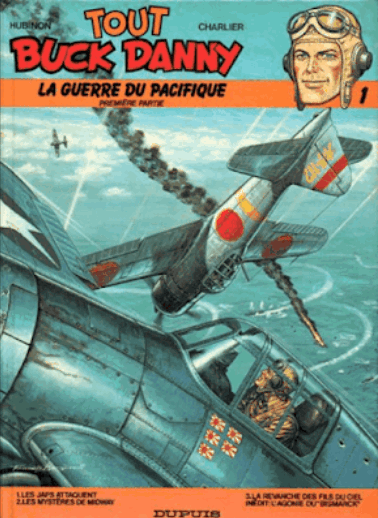
We will play the Americans (the only faction playable), and for the purpose of the story I will feign ignorance of the location of the Japanese force because, you see, the AI always starts in the same exact position and always behaves the same. Not that you can do much with this information, as you do not control the scouting operations and you cannot attack what you cannot see.
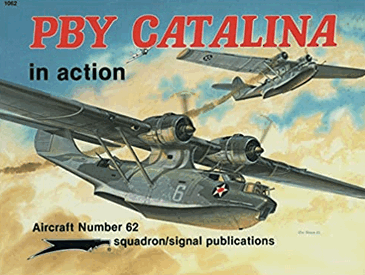
The player is given command of Task Force 16 and Task Force 17, initially located in the top left corner of the battle area. Midway is in the relative center of the map.
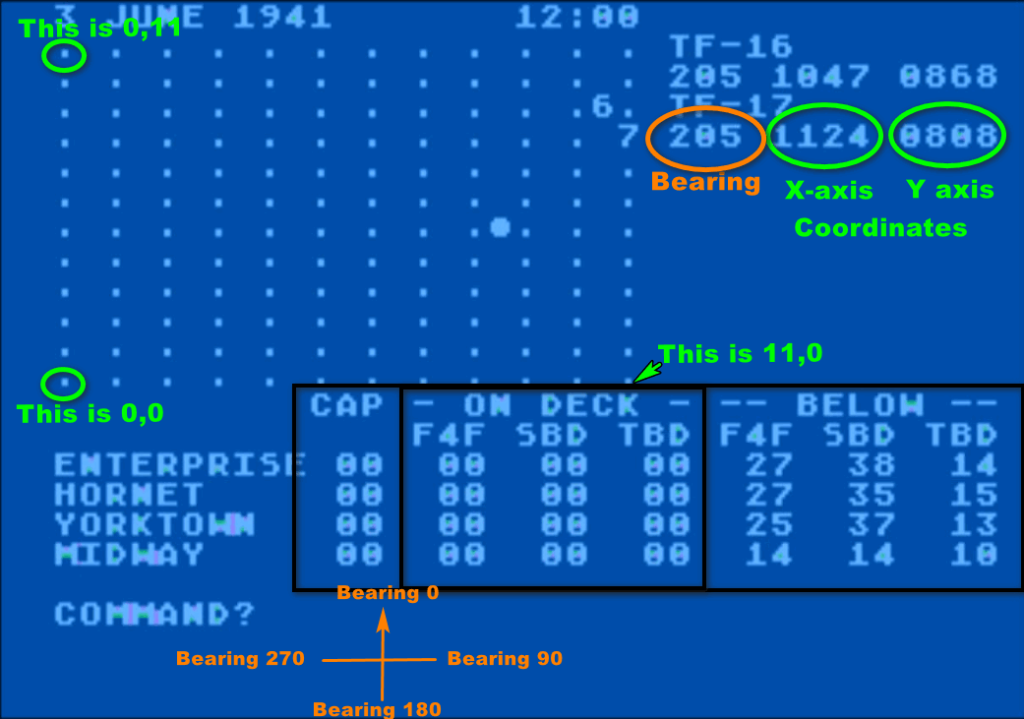
For this battle, I decided not to exploit the fact that I knew the exact Japanese location, nor to “unrealistically” put all the fighters (noted F4F above, for F4F Wildcats) on my carriers in patrol mission [CAP, for Combat Air Patrol] missions until the Japanese are spotted. Letting the game run historically as long as no hostile fleet is detected, Task Force 16 and Task Force 17 head toward Midway.
For reference, my fighters will fight their Japanese equivalent (the Zeke), Japanese bombers (the Val) and Japanese torpedo bombers (the Kate)
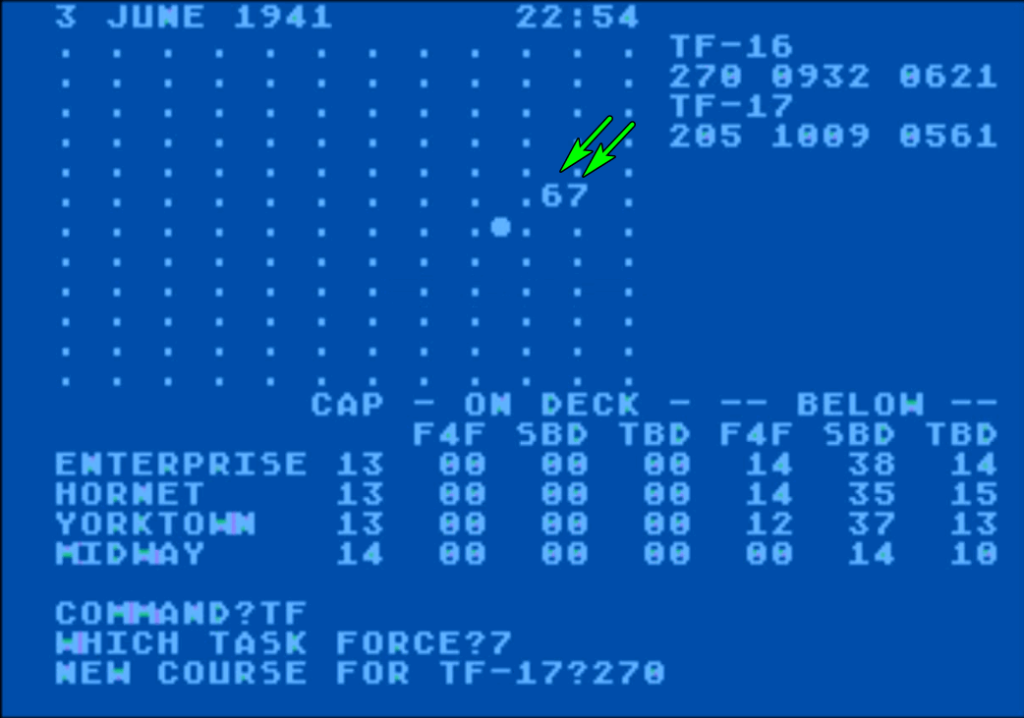
Nothing happens the 3rd of June.
On the 4th of June, a fleet is detected South West. I decide to keep patrolling around Midway while the Japanese fleet approaches :
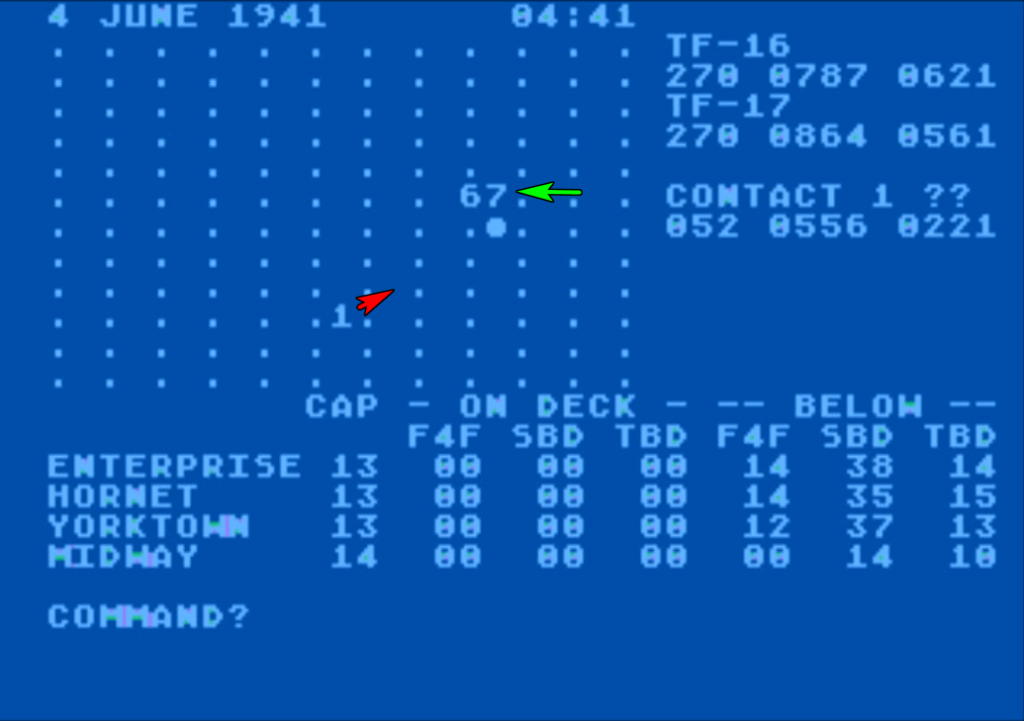
Suddenly, out of nowhere, the Japanese mock my fair play and attack !


Wait what ?



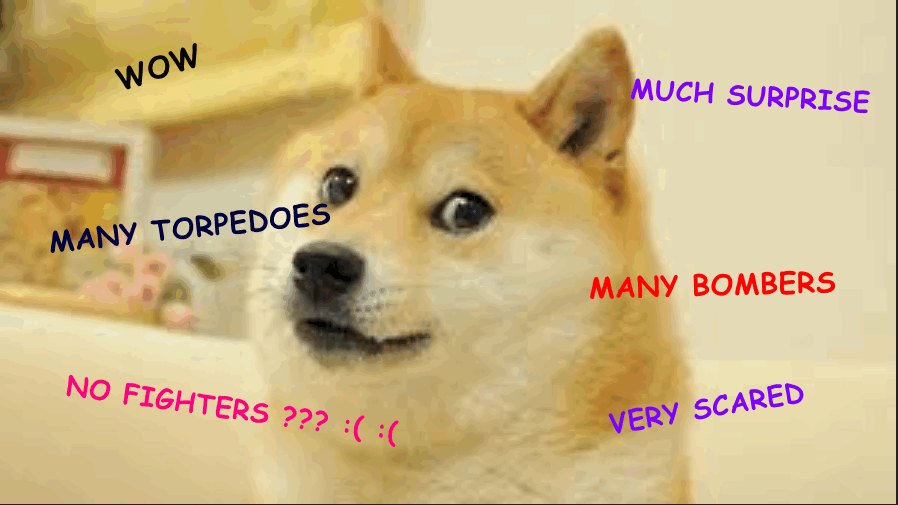
That’s 84 Torpedo bombers attacking the Yorktown. The secret to dodging 84 torpedoes is that you don’t dodge 84 Torpedoes. Consequently :
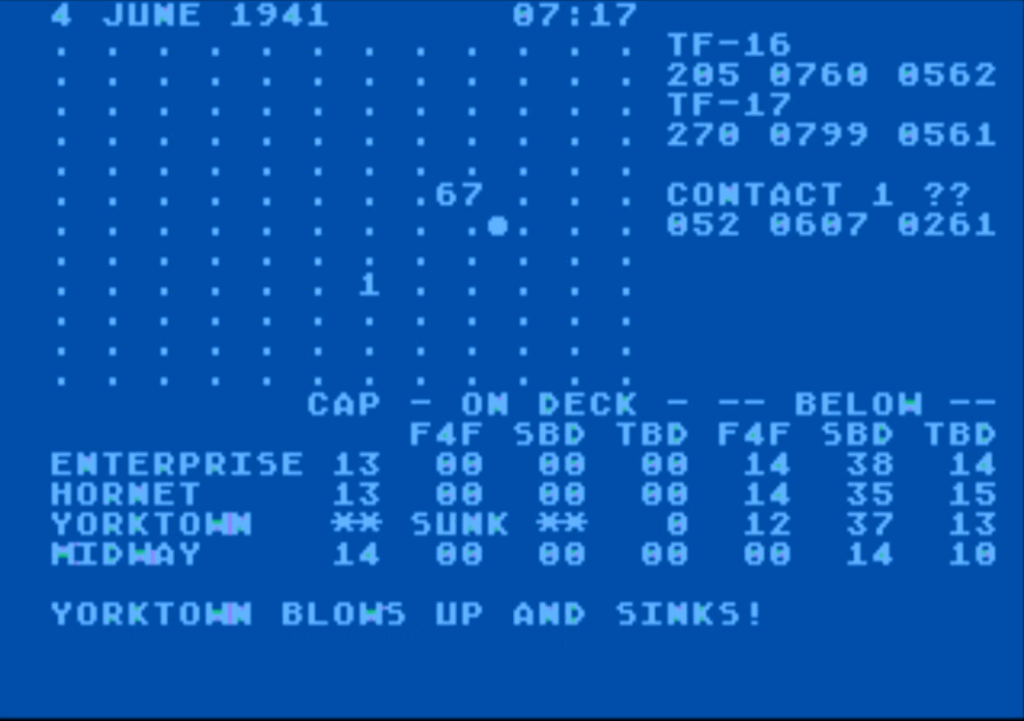
What a start ! I am totally in control of the situation !
If there is a silver lining, it is that I lost only one carrier, and the enemy strike force from which the attack came is now detected :
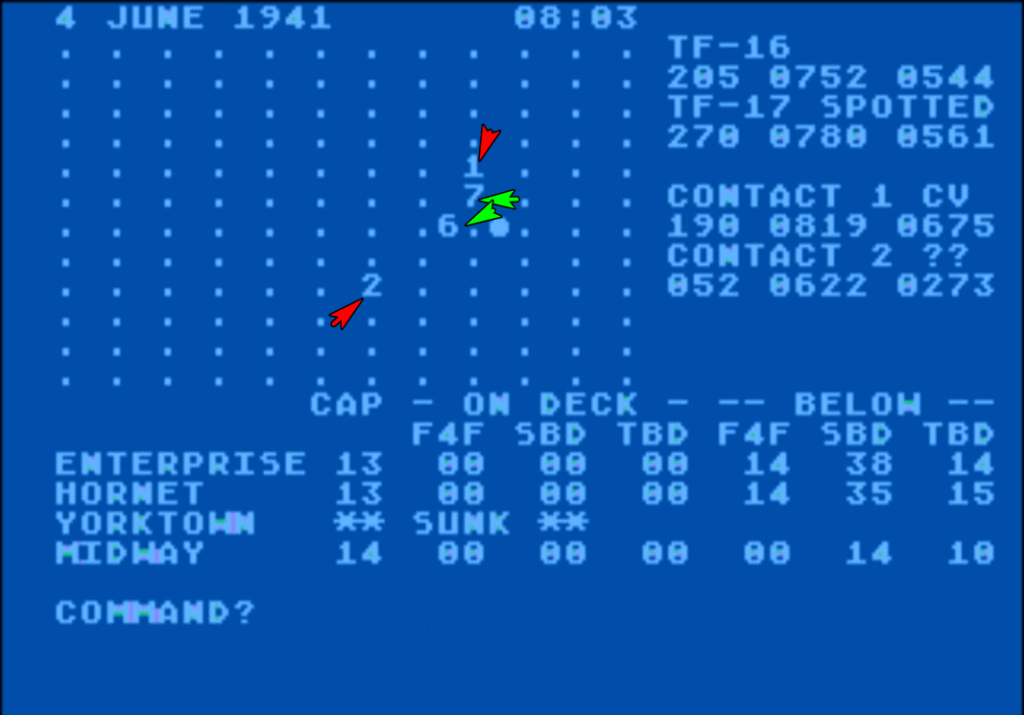
It is close to both Midway and to Task Force 16 and its two carriers, and as such Every. Single. Plane. I still have is sent to attack it :
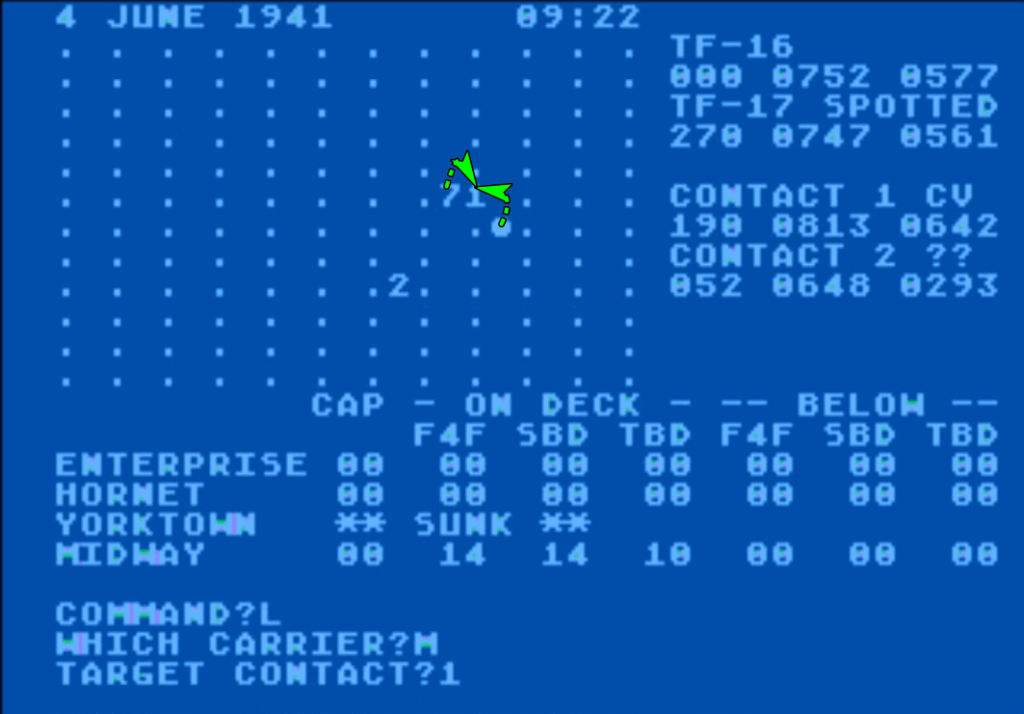
But the planes arrive one after the other rather than as a block. Enemy CAP is there, and shoots down most of the dive bombers (SBD Dauntless) from the USS Enterprise, as my fighters chose to rather escort the torpedo bombers (TBD Devastator) attempting ineffective runs on the enemy ships.
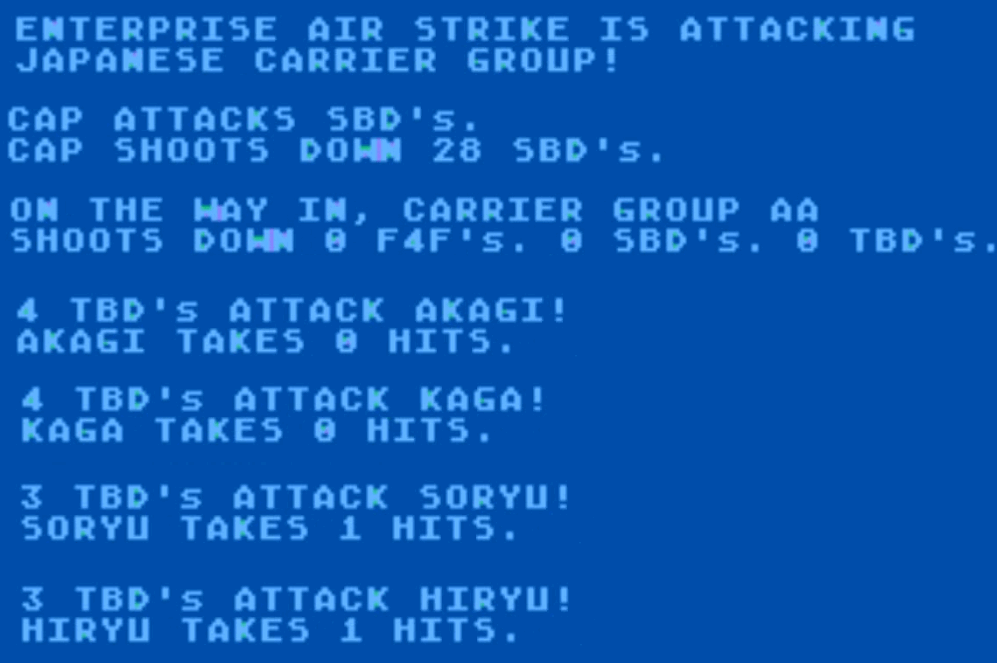
The rare surviving dive bombers don’t perform much better, and the Japanese carrier group gets out mostly undamaged from the first attack.
The planes from the Hornets arrive later, and this time it is the Devastators that are destroyed. The dive bombers inflict significant damage to the Hiryu and some minor damage to the 3 other carriers.
Finally, the planes from Midway arrive almost one hour after everyone and deal no damage. The Japanese ships did not have planes full of fuel and ordnance on their decks ready to trigger a massive fire…
… because at that moment those planes were flying toward Midway :
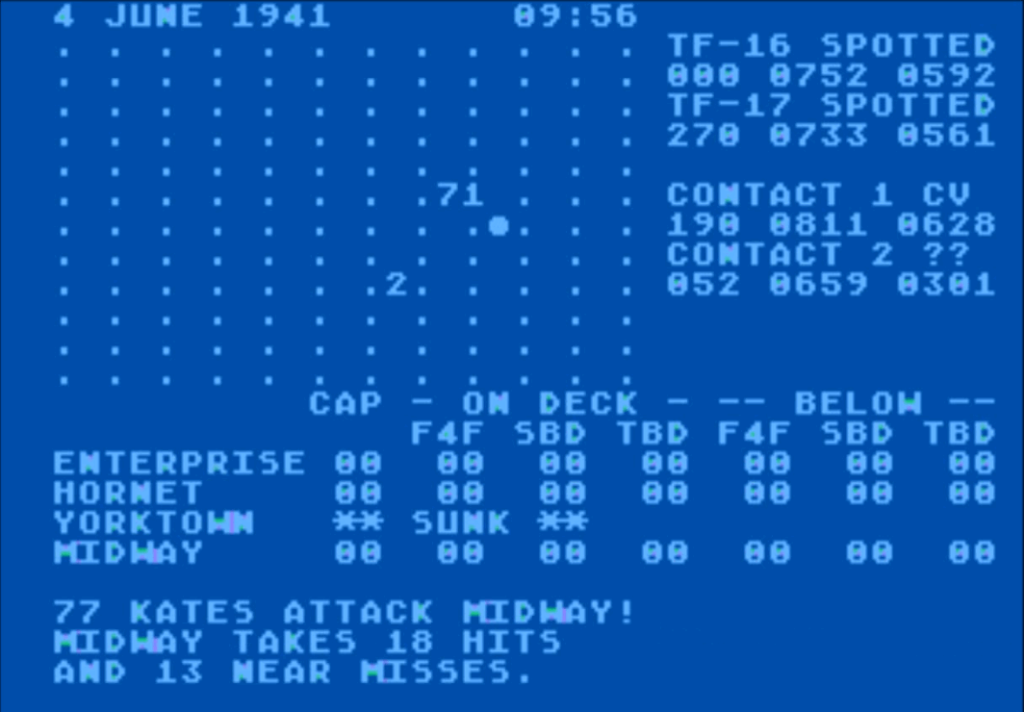
The Japanese Strike Force is still out there, but so is my Carrier Fleet. The planes are sent again, one hour later.
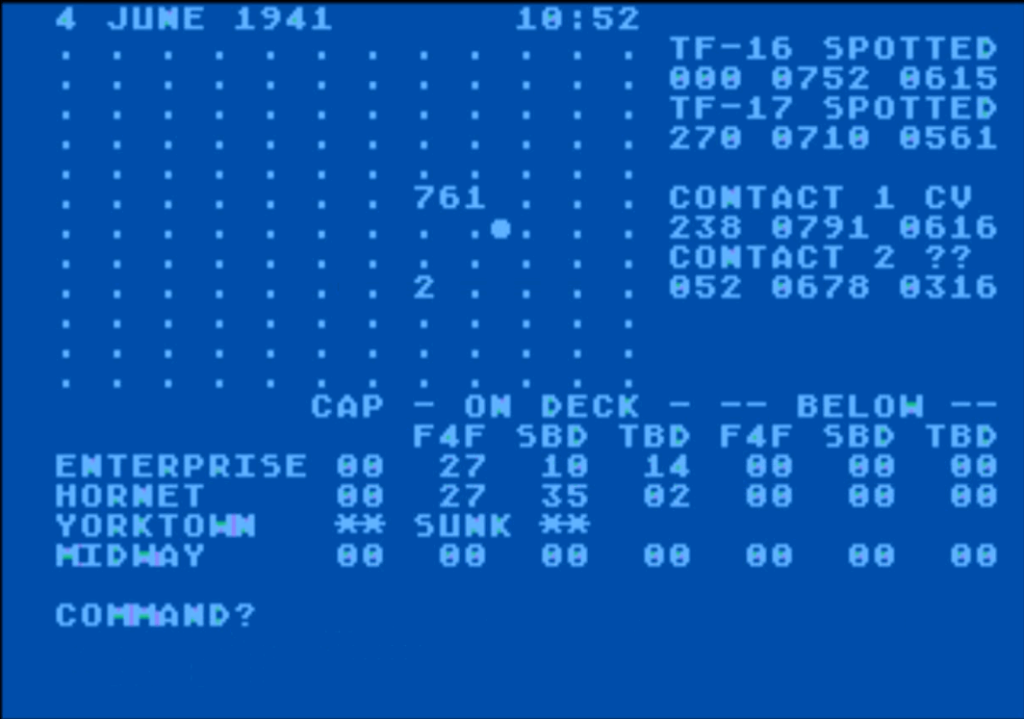
Sadly, the USS Enterprise teeth – the dive bombers – has been pulled out already, though this time the fighters engaged the Zekes, and destroyed a good number of them. This should open the way for the Hornet planes, except …

One hour and a half later, it is time for a third attack :
Sadly, as soon as my planes take off, the Japanese planes are on the horizon :

The USS Hornet is destroyed, but its air group manages to put the Akagi and the Hiryu out of commission – though does not destroy them. Meanwhile, the USS Enterprise air group is as ineffective as ever.
We are now at one carrier against two. The surviving planes from the Hornet land on the Enterprise, so maybe I still have a fighting chance.

I am readying for another strike. All the planes are on deck, ready to take off.
Suddenly :
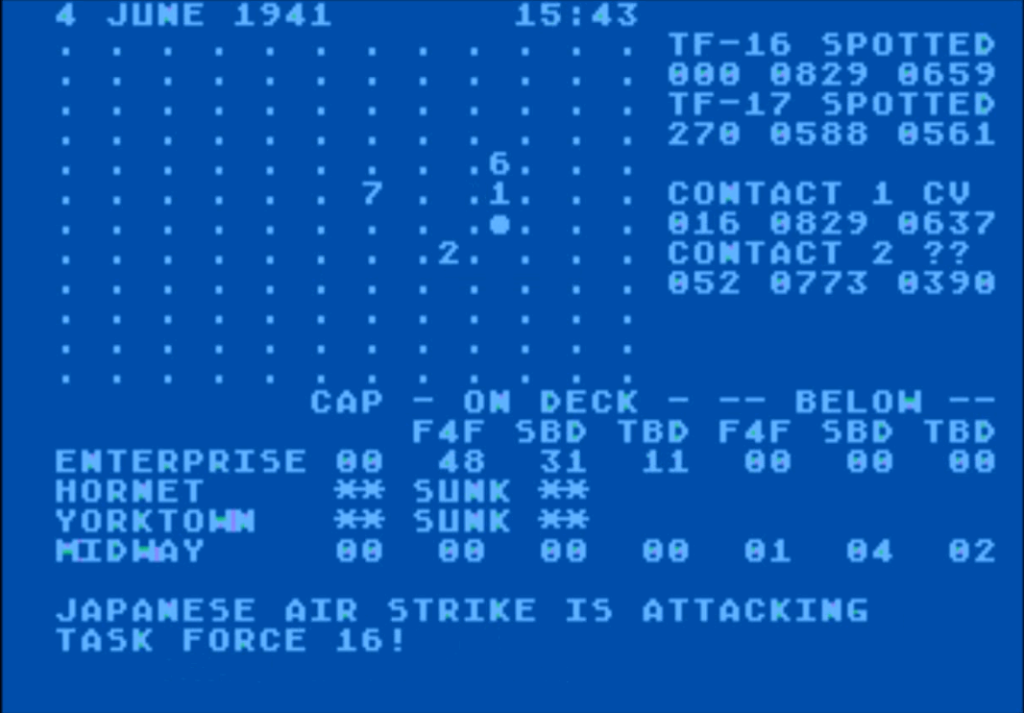
With all the planes on deck, there is absolutely nothing the USS Enterprise can do, and consequently :
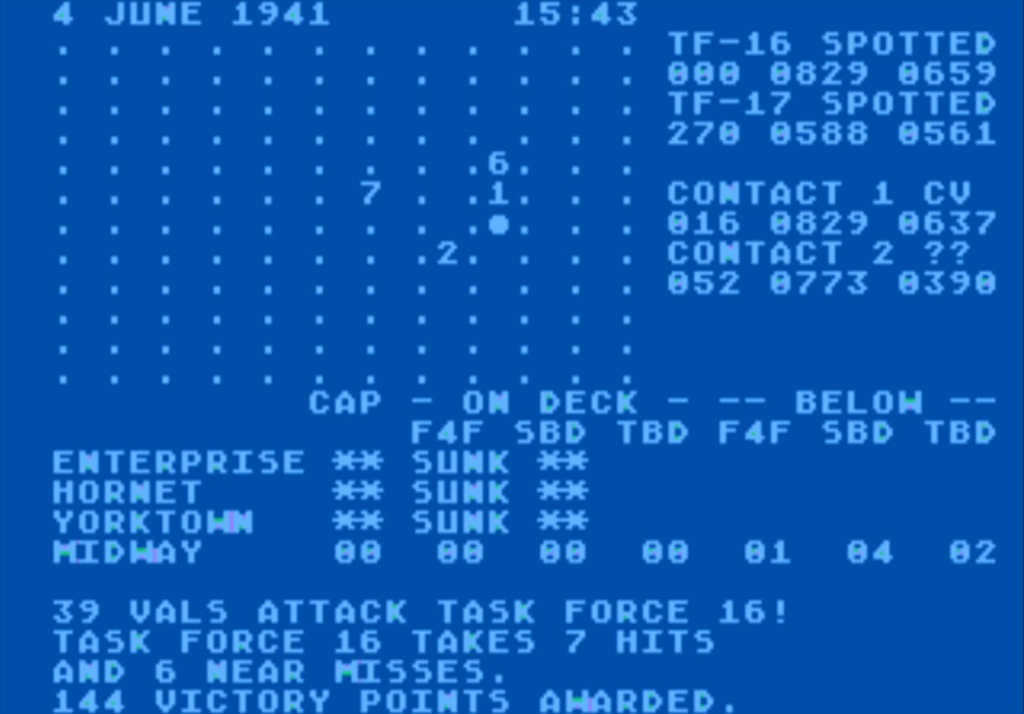
The USS Enterprise is annihilated. It is the end. The Japanese even have the luxury of inflicting so much extra damage on the task force that they receive extra points ! With all my carriers lost, I have nothing to protect Midway, which is invaded by the transport fleet. The Japanese have won !
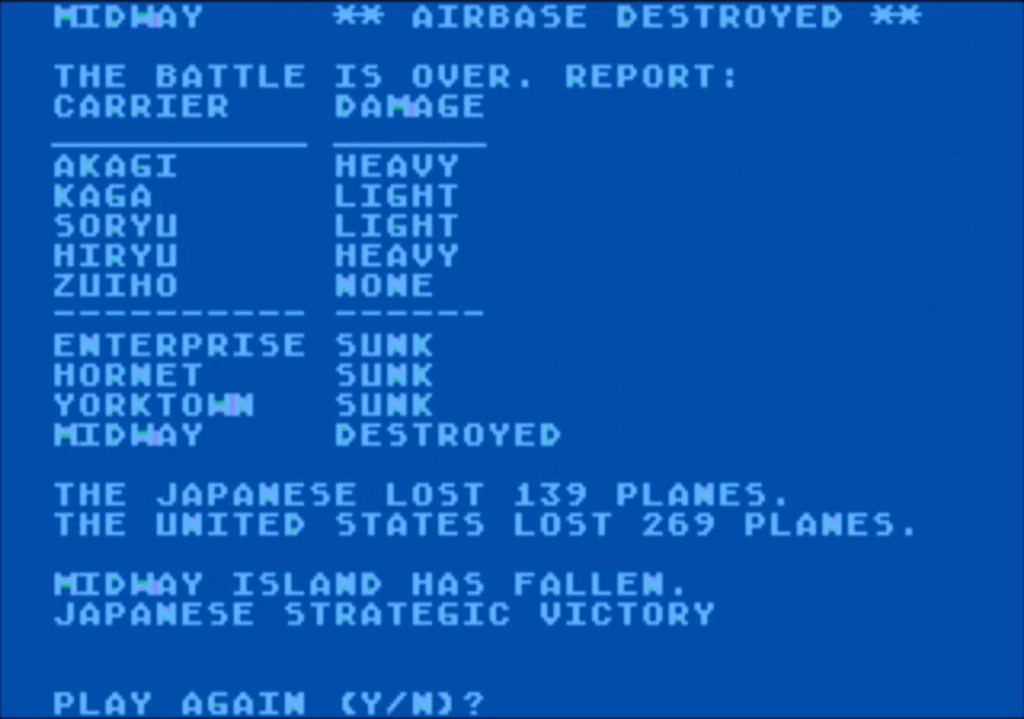
Looking back, this play was a typical show of the huge weaknesses of Campaign Midway : everything relies on having the first strike, but you have no control whatsoever on the scouting so you just hope to be more lucky than the Japanese. If the Japanese attack you first and (as would be likely in such a case) you lose a carrier, there is little you can do. I had tests where I had allocated all my Task Force 6 fighters in CAP, and still the Japanese sunk both carriers during their first attack that came from nowhere.
Not that you should NOT use all your fighters as CAP, since the game has no Carrier Launch & Recovery Cycle Management except the fact that you need to wait one hour/turn between arming the aircrafts and launching them for a strike. CAP planes can be allocated in and out of CAP instantly at any time. I decided to be a bit realistic there, and may have lost the Yorktown due to this.
In retrospect, I do not think there was any strategic decision to make after I chose not to exploit my knowledge of the scenario. The destruction of the Yorktown came from nowhere and after that both fleets were in sight and in range of each other, and in this game the only reasonable action in this situation is to send everything against the Japanese, which I did.
I managed to attack three times in total with two carriers worth of planes (in addition to Midway’s planes), but I only managed to incapacitate two aircraft carriers during the 5th or 6th attack. Historically the Americans destroyed three of the four Japanese carriers with one attack with three carriers worth of planes. The Japanese, on the other hand, destroyed one of my aircraft carriers by attack – and I know by experience that CAP would have been irrelevant.
Certainly, this outcome was not unrealistic, a lot of luck was involved in those battles of the Pacific War – but it does not make for great gameplay.
Ratings & Review
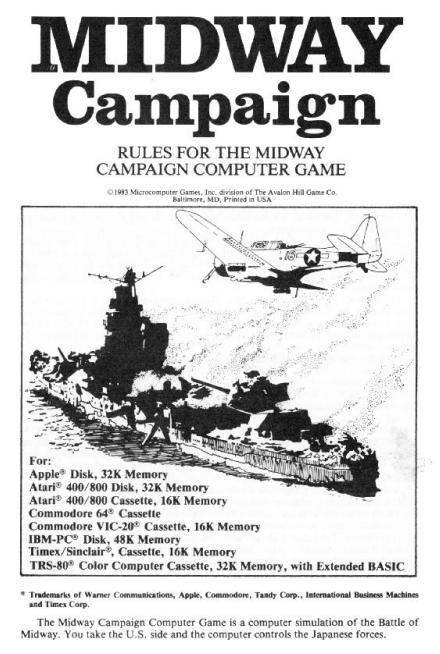
Midway Campaign by Avalon Hill, USA
First release : Summer 1980 on Apple II, Commodore PET, TRS-80
Tested on : Atari
Total Hours Tested : 3
Average duration of a battle : 10-15 minutes
Difficulty: Trivial (0/5)
Would recommend to a modern player : No
Would recommend to a designer : No
Final Rating: 15/100
Avalon Hill decided to enter the computer market with five games released together in summer 1980 : Midway Campaign, North Atlantic Convoy Raider, NukeWar, B-1 Nuclear Bomber and Planet Miner. Those games were released on almost all platforms possible at a budget price, but also at a budget size : at least three versions of each game had to fit on one cassette.
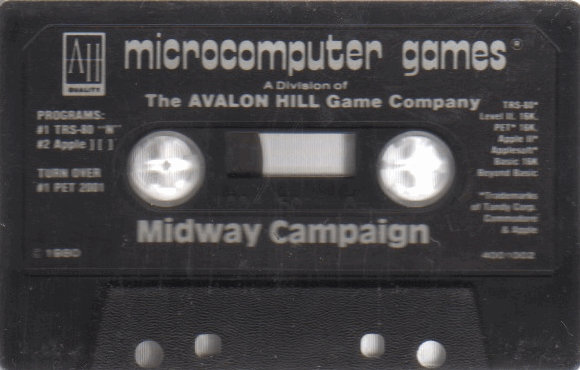
The best of those games is probably the one which is not a wargame : Planet Miners. I will cover the four others.
The real battle of Midway was the perfect setting for a computer game of the heroic era : it was probably the most decisive battle of the Pacific war, and yet it involved only a limited number of moving parts, almost exclusively at sea which is certainly easier to represent than land.
A. Settings & Aesthetics
As you read the manual or reach the first screen of the game, the game feels like a labour of love with strong attention to detail. This goes far : for instance Japanese and Americans follow different rules for repairing ships, and the carriers have the historical number of planes.
This feeling quickly vanishes as soon as the pieces start moving, and you realize that the efforts have been allocated to the superfluous but not to the necessary : you will see torpedo bombers attacking the Midway airbase, you will see absurd numbers of planes on deck at the same time (in one of my tests I had more than 100) and you will see enemy fleets traversing each other as if nothing happened.
There are obviously no graphics.
Score : 4/20
B. UI , Clarity of rules and outcomes
The UI is clear, by virtue of being so simple.
As a player, you have very few actions available :
- You control the bearing of the two Task Forces (but not their speed which is constant),
- You can give exactly four orders to your planes :
– Combat Air Patrol [CAP] : Orders any number of fighters to patrol over your carrier or base,
– Arm the planes, which means moving the planes on deck to prepare them for a strike, leaving them and the carrier vulnerable,
– Launch a strike on a fleet on range (200nm, so 2 “dots” on the map), once your planes have been moved on deck,
– Clear the deck, which is of course moving the planes from above deck to below deck.
And … that’s all. You cannot relocate planes between carriers or to Midway. You cannot move carriers from one task force to another. Even reconnaissance is done automatically by (invisible) PBY Catalina. The game automatically makes sure that you do not send planes on suicide missions or that you do not send planes if they will be unable to come back before dark (1900 to 0400).

As for the outcomes, they feel extremely random, both for the individual engagements (sometimes my fighters shot down dozens of Zekes with no losses on my side, and sometimes the Zekes shot down dozens of my fighters with no loss on their side) and for the result of the campaign. While this can be construed as realistic given the nature of the Pacific War, a little more explanation on what happened when all your fighters were shot down would have made this randomness much more acceptable.
Score : 4/20
That would have been even worse if I had not played on an Atari Emulator :
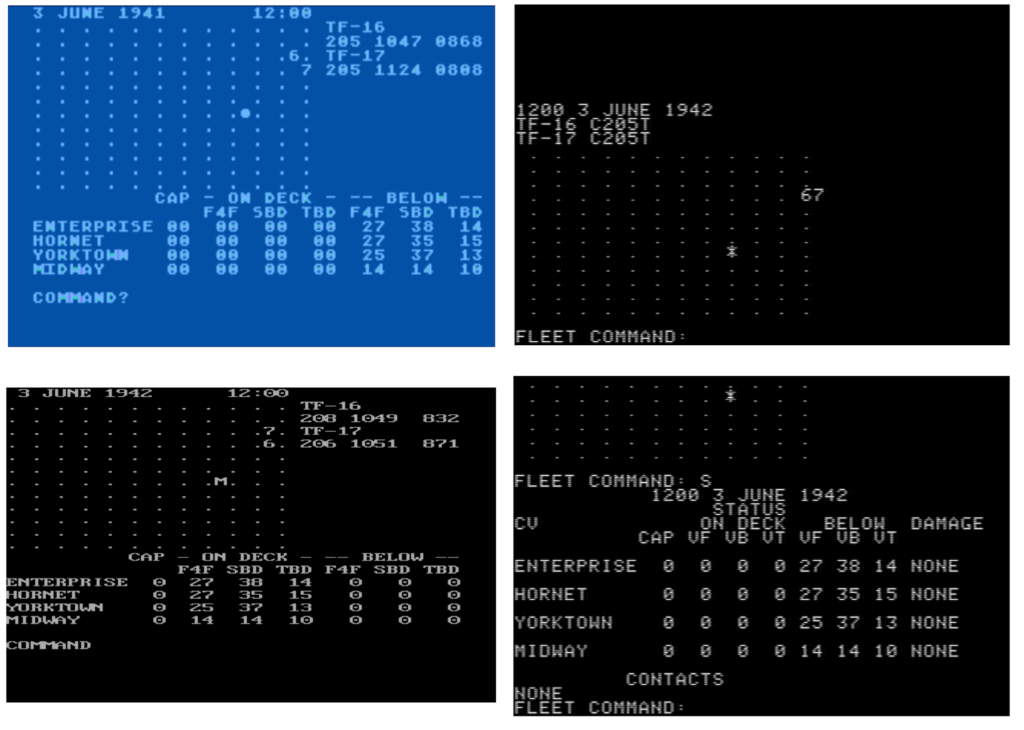
C. Systems
The strategic layer consists of putting all your planes in CAP and then waiting for the random number generator to find the enemy fleet.
The tactical layer starts when you have found the enemy fleet ; it consists of sending all your planes against that fleet and hoping for the best.
Overall, the game feels like a roulette with extra steps.
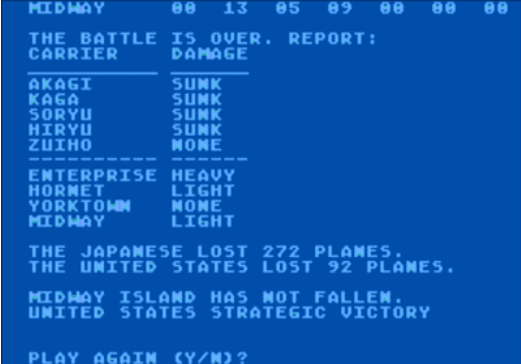
Score : 1/20
D. Scenario design & Balancing
There is only one scenario with fixed starting positions for both sides, so you quickly know exactly where every single Japanese fleet is – not that you can do much with this information given you will not be able to attack until the game tells you you detected the enemy fleet.
Worse, unlike Computer Bismarck, the AI follows exactly the same plan every game, no variation. The manual even tells you more than you ever wanted to know about the AI’s behaviour:

The scenario has three Japanese fleets, but actually only one matters, and 90% of my tests were over before the end of the second day, and thus before the transport fleet, the cruiser fleet and the Zuiho even came in range of Midway.
Score : 3/20
E. “Fun” and Replayability
Midway Campaign feels like an adventure game : it is fun exactly once, when you have not realized yet you are being railroaded by the game intrinsic randomness. After that I felt like I was only playing to test, or to write the After Action Report above.
Score : 3/20
F. Final rating
15/100. It could have been a decent game if I wanted to teach the battle of Midway to a class – but it fails at doing anything beyond that. Midway Campaign was made by connoisseurs of the Pacific War, but connoisseurs who did not manage to detach themselves enough from the events to make an acceptable game out of it.
Contemporary reviews
I could not find many reviews for Midway Campaign. In 80 Microcomputing Magazine (“the magazine for TRS-80 users“), David Tinis complains about the lack of graphics and on the fact that the player has to “sit and wait” for the results of the scouting phase. The reviewer recommends the game to those new to conflict simulations, but “advanced game strategists will probably tire of it quickly”. .
The General magazine – the magazine published by Avalon Hill – explains some of the weaknesses of the game. The General claims that the game was so large that it just barely fit in the 16K memory limit, and that therefore many elements were abstracted : ship-to-ship combat, submarines. As for search, it claims that the US Admiral in Command had no control over the operations of the scout planes. If true, this is typically a situation where gameplay should have trumped historicity.